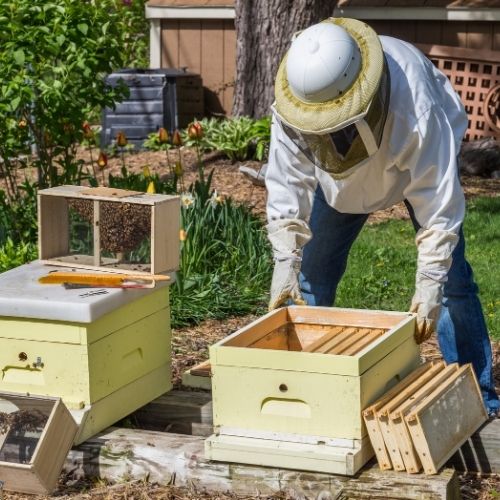Pollination
 Managed bees, such as honeybees and bumblebees, and pollinating wild bees are critical for the success of most vegetable operations. Bees improve the yield and quality of many fruiting vegetables including eggplants, peppers, vine crops and strawberries.
Managed bees, such as honeybees and bumblebees, and pollinating wild bees are critical for the success of most vegetable operations. Bees improve the yield and quality of many fruiting vegetables including eggplants, peppers, vine crops and strawberries.
Cucumbers, squash, pumpkins, and watermelons require pollination since the plants have separate male and female flowers. Pollen from the male flowers must be transferred to the female flowers to achieve fruit set. Without adequate pollen transfer, vine crops produce small or misshapen fruit. While bumblebees and wild bees are excellent pollinators, their populations may be too low to adequately pollinate large acreages of production. Therefore, colonies of European honeybees may be needed to assist pollination.
For most plants, pollination must take place on the day the flowers open. For many crops, pollen viability, stigmatic receptivity, and attractiveness to bees last only that day. Bee activity is determined by weather and conditions within the hive. Honeybee activity declines at temperatures below 55°F and at wind speed above 20 mph.
The number of colonies needed for adequate pollination varies with crop, flower density, length of bloom period, colony strength, and competitive flowers in the area. For most crops, provide one to two colonies per acre.
Insecticides applied during bloom are a threat to bees. If insecticides must be applied, select one that gives effective insect control but poses the least danger to bees. Also try to apply the sprays when bees are less active. When renting hives, get a written contract and have the contract specify the number and strength of the hives, the rental fee, time of delivery, and distribution of hives in the field.

